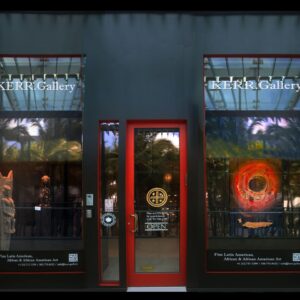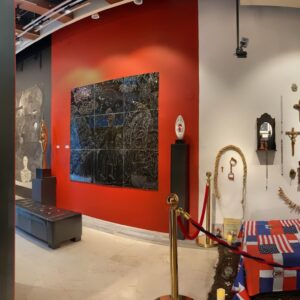In spite of the difficulties surrounding a changing social scene, Nina Johnson Gallery has had their best year since they opened in 2007. “The art gallery is a social space” says Karina Ors Frehling, Sales Director at Nina Johnson Gallery in Miami, Florida. Before COVID hit, this gallery had frequent community events including “exhibit openings and receptions and events surrounding shows, such as artist talks and museum group walkthroughs.” With COVID this has all gone out the window, forcing the gallery to get creative in order to keep people engaged and show support. New initiatives include Instagram Live tours of artists’ studios and sending out collateral materials including books and face masks designed by artists they represent. And Frehling says that, “on average people are spending more on a piece.”

The pandemic has brought much global hardship, with over 400,000 deaths in the USA alone. To put things plainly, we have suffered tremendously. So, one might wonder, why worry about the art market? Andrew Kronenberg of Andrew Kronenberg Fine Art LLC in New York believes that, “Having had exhibitions and performances of all kinds canceled should make us all realize the importance of the arts to our cultural vitality and especially to our economy.” The truth is that difficult times often inspire as well.
This is true of Pablo Picasso’s Blue Period, in which he painted many great canvases using different shades of blue to reflect his sadness. It is also true of Frida Kahlo, who used her physical pain as inspiration for her paintings, giving us sad and beautiful works like “The Wounded Deer”. Some positive things are also bound to come out of this bleak period of the pandemic. Kronenberg seems to agree, saying “many artists have used their time in the studio to make pandemic-inspired work.” Frehling agreed, adding that “many of our artists have moved inwards and are thinking more about mortality, fragility and of course shifting focus to creating work that is more emotionally charged.”

While we may not have seen the next great masterpiece emerge from the COVID era just yet, artists have taken to the streets to show their support. Graffiti images of doctors wearing superhero masks and nurses with boxing gloves can be seen across the globe. Graffiti artist Banksy has even posted images of his COVID-inspired pieces on his Instagram account, including “Game Changer” which depicts a little boy playing with a nurse doll. The easy accessibility to these images provides hope for people at a time when it is difficult to connect with others. It reminds us that in this struggle we are not alone.
Some arts businesses have been hit harder than others. “The pandemic has taken quite a toll,” says Reynold Kerr of Kerr Art Gallery in Miami, Florida. Kerr, who has had art galleries in both New York and Miami, made the move to Miami’s Design District when the pandemic started, following “a long period of deliberation.” He was recruited by friends to take an empty space in a city with less density, warm weather and outdoor shopping spaces. Since then, he has been unable to determine whether the move was worthwhile. The inability to have opening receptions for artists has been a problem, but Kerr Gallery has been “more active on social media” than they would have been otherwise. To Kerr there is a simple explanation for the depreciation of the art market, saying, “there is simply no substitute to experiencing art in person.”

While overall the market has dropped significantly, Kronenberg has seen “clients continue with ongoing projects and building out their collections.” While people have not been able to go to museums and galleries in person, online auctions have become increasingly popular. “With increased bandwidth and the ability to share high-res .jpgs and video, I think the average price that buyers are willing to spend on art in an online forum is being pushed up,” said Kronenberg. Auction houses like Sotheby’s and Christie’s are leading the way, and online auctions accounted for 13% of total art sales in 2020. In fact, online sales made up 66% of art sales in 2020 compared to the meager 27% in 2019. Kronenburg says that “bidding in an online auction from home can provide some excitement,” especially in times where we have certainly been lacking that feeling.
One thing is for sure, the business of art has been forced to move onto virtual platforms, making its way in spaces like Zoom and Instagram to reach clients. While this is innovative and forward-looking, nothing beats seeing art in person. It inspires, motivates and challenges. It is an essential part of the human experience. And while it may take a few years for art fairs like Art Basel to pop up again, the art industry is hopeful for the future. Kerr puts it perfectly saying: “The world needs art and the industry needs the world. The sooner we can be safely reunited the better for all.” In the meantime, take advantage of those virtual gallery tours. I know I will.












